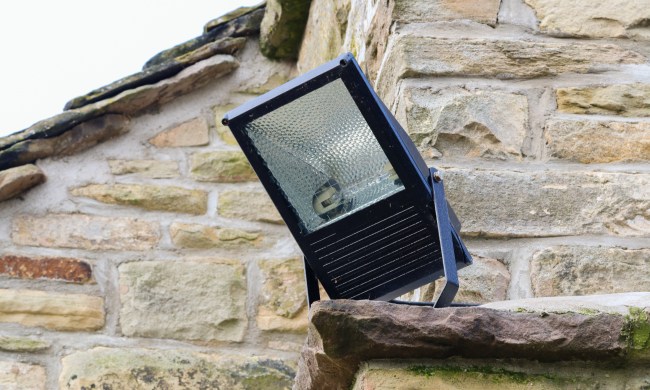The idea of using sustainable power sources has become increasingly popular over the past few years. They’re seen as solutions to environmental issues like the pollution produced by industrial power plants. Plus, who doesn’t want to generate their own power, save money, and in some cases sell excess energy back to the local power plant?
That’s where DIY outdoor solar lights come into the picture. While you probably won’t generate enough power to sell energy back to a local power plant with this specific alternative to traditional electric lighting, you can still save money and help the environment in the long-term. In the article below, we’ll go over some of the benefits of using outdoor solar lights on your property and show you what to do when embarking on a DIY outdoor lamps project.

What are the advantages of solar lighting?
We touched on this above, but solar-powered objects are environmentally friendly. By building (or purchasing) your solar-powered lamps and other lighting fixtures, you can reduce your carbon footprint. By creating or acquiring solar-powered items, you’re aiding in reducing the demand for non-renewable resources.
Many people are hesitant to begin DIY solar lights outdoor projects like these and even balk at buying solar-powered items because of the expense involved. In general, the upfront cost is indeed higher than purchasing items that run off of traditional power sources. However, you can absolutely realize savings over the long term. In other words, you probably will pay more in the beginning, but over time you’ll see that solar-powered lights have become a long-term asset.
Besides monetary savings, there are other benefits. For instance, by and large, you don’t have to worry about maintenance issues other than periodically cleaning the fixtures. Speaking of fixtures, solar lighting comes in a variety of styles. Therefore, there should be something you can use on your property that will work with whatever aesthetic you’ve got going on.
The only caveat here is that solar power works best in areas where there is plenty of unrestricted access to sunlight.
DIY solar lights
Below are the materials you’ll need to purchase to begin your DIY solar light project:
- PCB circuit board
- AAA NiMH batteries
- A 2 Volts Solar panel
- Battery holder
- LED lights
- Jar
- A drill
- Wire cutter
- Superglue or hot glue gun; and
- Soldering machine
Prepare, cut, and trim the wires
Once you’ve purchased all the materials necessary to begin building your new solar lights, you should notice that your solar panel, battery holder, and circuit board all have a bunch of red and black wires sticking out. All of these must be trimmed because they’re too long for your purposes.
Keep in mind that the black wires are the ground connection, or negative, and the red ones are positive. When connecting wires to your circuit board, remember that positive wires connect to negative parts and negative wires connect to positive parts. (These parts should be marked.)
Take your wire cutters and make the wires about three and a half inches long. You’ll also need to strip the wires of insulation at about the one-and-a-half-inch mark so that you can tie the wires together.
Finally, you should see the words “solar” and “battery” on the circuit board. You need to connect solar and battery wires to the wires marked “battery.”
Connect the circuit board and battery holder
Here is where you connect red wires to red wires and black wires to black. You’ll need to solder them together. Once these are soldered together, you need to connect the LED light. Some circuit boards will have the LED light built-in. Others won’t. If yours doesn’t, you can attach an LED light yourself.
There should be an input on the circuit board for the LED lamp. Ensure the shorter LED diode goes into the negative spot and the longer one into the positive spot.

Put a hole in the lid of your jar
Puncture the lid of your jar with a sharp tool. Be careful where you do this because you could damage whatever is lying underneath the jar lid. The hole should be in the center of the lid and just large enough to pull the black and red wires through.
Connect the circuit board to the solar panel
Put the black and red wires through the lid, take the stripped wires from the solar panel and connect them to the circuit board. Once all the wires are connected to their appropriate spots, it’s time to finish everything by gluing the elements of your solar light together.
Keep in mind that you must glue the lid to the battery holder and the circuit board. The two should be next to each other. However, don’t glue the batteries. If you do, you won’t be able to replace them later. Also be sure not to glue the edges of the lid, otherwise you won’t be able to closet he jar.
When you’ve finished all of the above, the battery holder and the circuit board should lie side by side under the solar panel. Screw the lid on tight and enjoy your very first DIY outdoor solar light!


